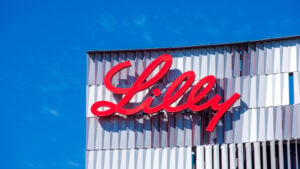3 Healthcare Stocks to Sell in August Before They Crash & Burn
The stock market is currently in a rotation. Traders are moving capital from aggressive growth and technology names to find safety in other sectors of the market.
Healthcare has been one of the beneficiaries of this switch. People tend to get sick and need medical care regardless of what’s going on with the economy. In addition, America’s aging demographics will invariably lead to higher healthcare spending over time.
While the long-term case for healthcare makes sense, valuations are starting to get out of hand across much of the sector. Especially with the upcoming presidential election which could usher in significant regulatory changes for the industry. The time has come for these three healthcare stocks to sell.
Ensign Group (ENSG)

Ensign Group (NASDAQ:ENSG) provides skilled nursing, senior living, and rehabilitative services. Headquartered in California, the company has now expanded and serves a number of additional markets as well, primarily in Midwestern and Rocky Mountain states.
Ensign faced some challenging conditions during the pandemic, but it has recovered and rallied to new all-time highs.
Traders may be getting ahead of themselves. ENSG stock has jumped more than 40% over the past year, including a big move this summer. This has pushed the stock to more than 25 times forward earnings.
Traditionally, skilled nursing stocks trade at low multiples given the significant risks around labor costs, government regulation, and reimbursement concerns. While Ensign is firing on all cylinders right now, ENSG stock is likely to slump once sentiment returns to more realistic levels, making it one of the healthcare stocks to sell.
Eli Lilly (LLY)

Eli Lilly (NYSE:LLY) is one of the world’s largest pharmaceutical companies. It has long been known for its cancer and immunology drugs.
However, LLY stock has gone to the stratosphere for a different reason: weight-loss drugs. The firm’s diabetes products, such as Monjuaro and Zepbound, have become absolute blockbusters. While originally intended to manage diabetes, this category of drugs, GLP-1s, also turn out to be remarkably effective in helping fight obesity.
Long story short, Eli Lilly’s revenues have blasted off, rising from $25 billion in 2020 to an estimated $43 billion in 2024. Analysts see that jumping another 23% in 2025. That’s a solid trajectory, no doubt.
However, LLY stock is up around 70% over the past 12 months, and has rallied more than 600% over the past five years. This is, needless to say, a far greater movement in the stock price than the company’s fundamentals.
As a result, shares now shockingly trade for 55 times forward earnings. This sort of valuation almost never works out well for a healthcare stock.
McKesson (MCK)

McKesson (NYSE:MCK) is one of America’s three dominant drug distribution firms. These are the companies that interface between pharmaceutical companies, pharmacies, and insurers to stitch together the drug supply chain.
These are exceptionally low profit margin businesses, earning just a couple of percent profits, albeit on hundreds of billions of dollars a year in revenues.
Right now, investors are enthused about McKesson’s prospects. It is riding the GLP-1 drug boom to strong top-line growth.
But the future outlook is tenuous. Politicians are looking for ways to lower drug costs, which could hammer McKesson’s business model, especially in an election year. A shift toward mail-order pharmacies could also slow down growth.
MCK stock is up 45% over the past 12 months, pushing it far past fair value. Morningstar’s Keonhee Kim believes the stock is worth just $460 per share as opposed to today’s $615 quotation.
On the date of publication, Ian Bezek did not have (either directly or indirectly) any positions in the securities mentioned in this article. The opinions expressed in this article are those of the writer, subject to the InvestorPlace.com Publishing Guidelines.
On the date of publication, the responsible editor did not have (either directly or
indirectly) any positions in the securities mentioned in this article.

